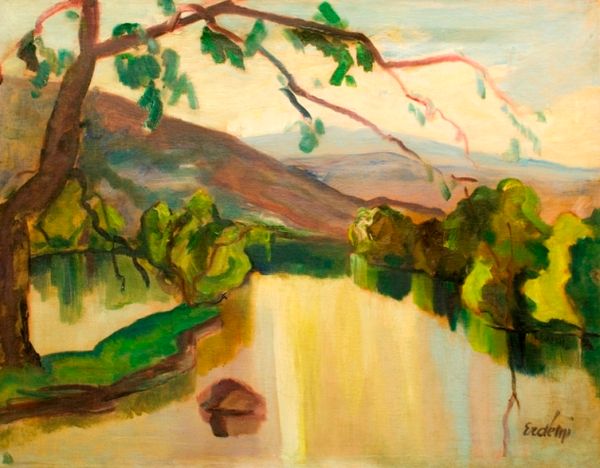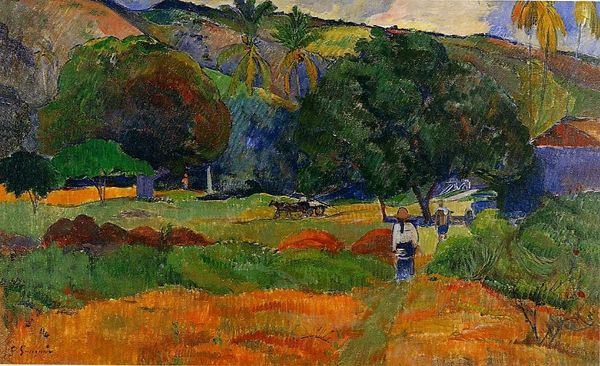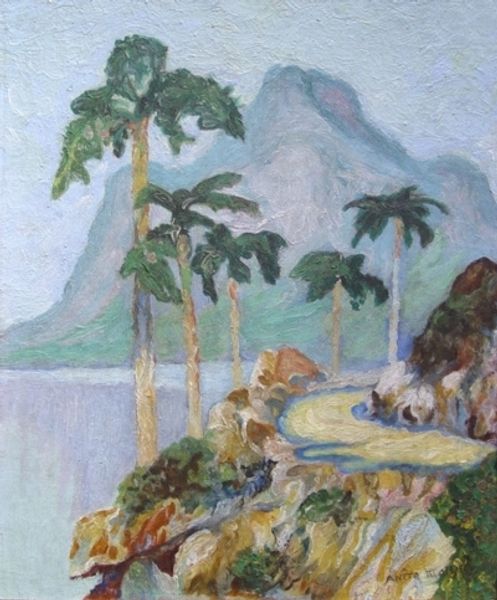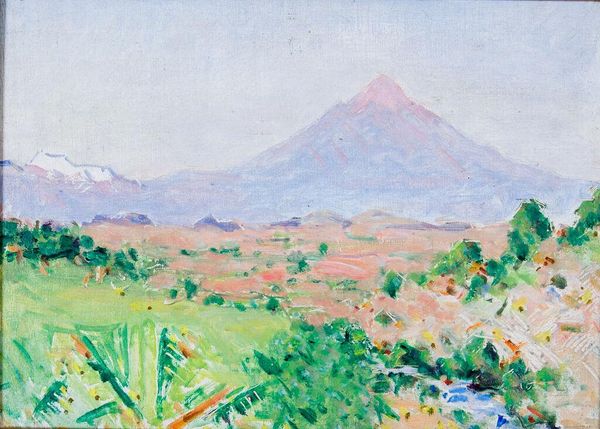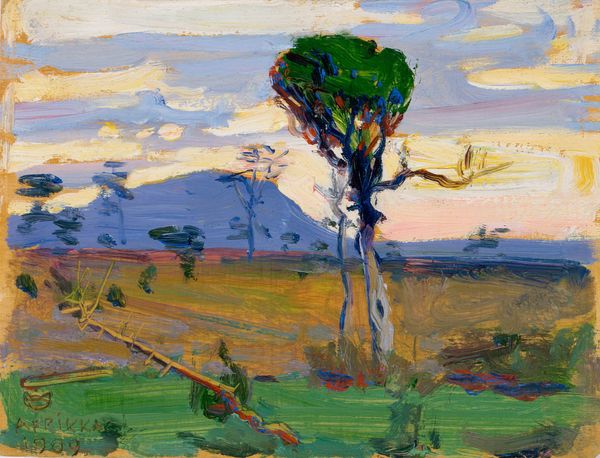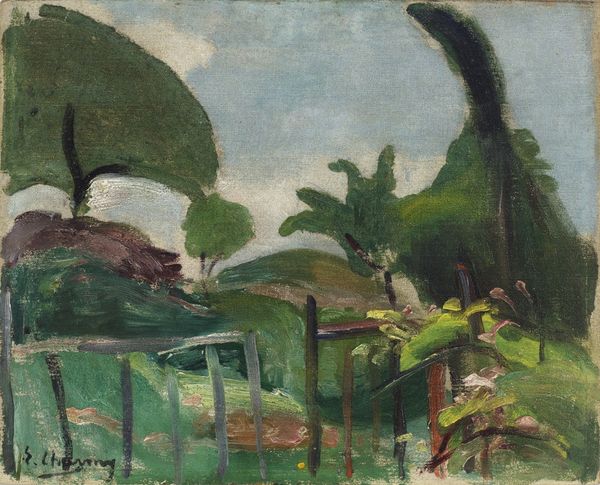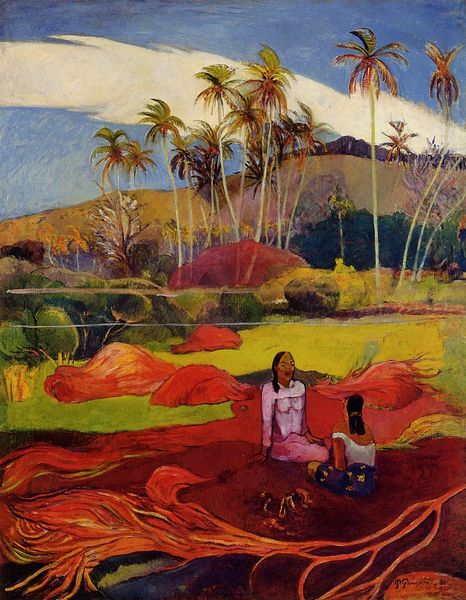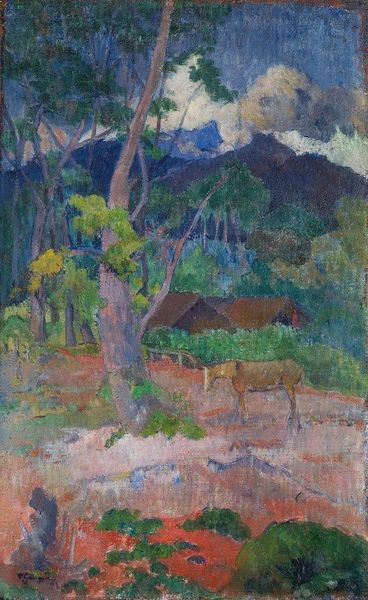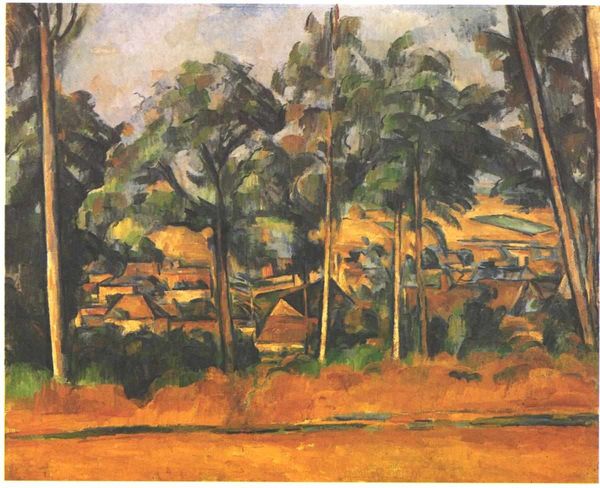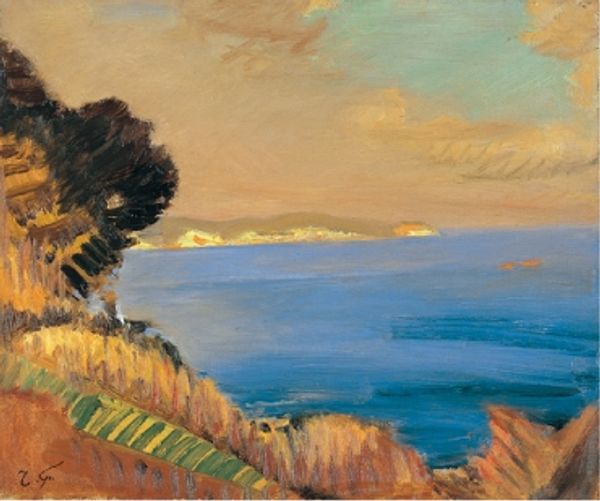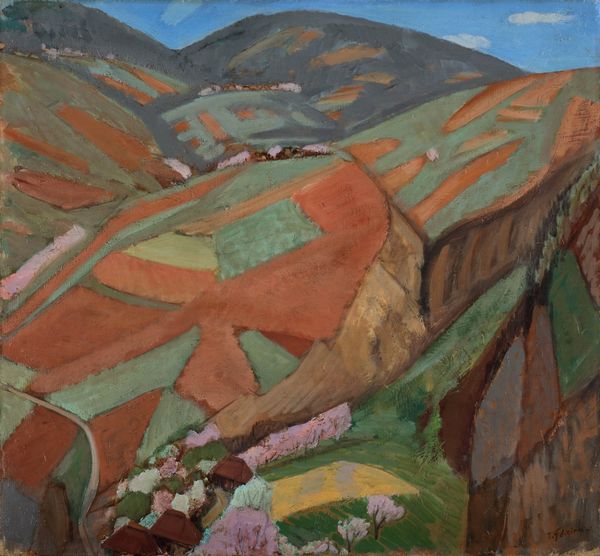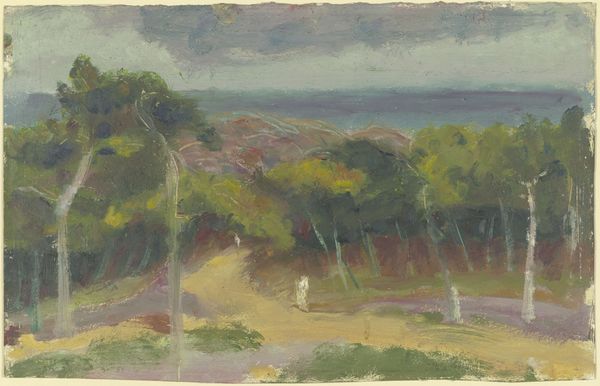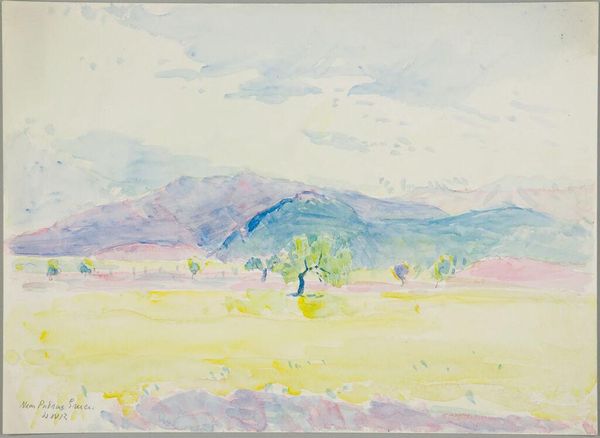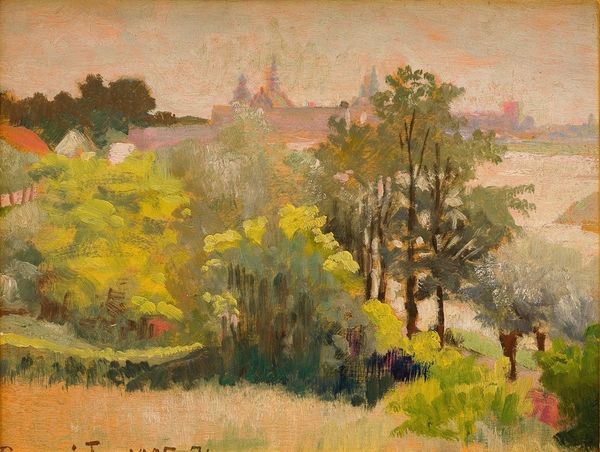
Copyright: Public domain
Editor: Here we have Paul Gauguin's "Tahitian Landscape" from 1891, an oil painting that just glows with otherworldly colors. I find the vibrant hues both calming and disorienting. What do you see in this piece? Curator: I see Gauguin attempting to construct an idyllic vision of Tahiti, one almost entirely divorced from the realities of French colonialism. Consider his biography. Fleeing what he perceived as the constraints of European society, he sought refuge in a place he believed was untouched by Western corruption. Do you see how problematic this inherently is? Editor: In what way? Curator: He arrived in Tahiti with pre-conceived notions, projecting his fantasies of a primitive paradise onto the Indigenous population. He conveniently ignored the societal disruption brought by colonization, creating romanticized images of the local peoples that catered to a European audience. Look at the idealized presentation; it actively erases the true impact of French rule. The vibrant colors feel almost like a deliberate attempt to overshadow this reality. What is the symbolism you think he intended, when actually looking at the history of oppression? Editor: So you are saying he was exploiting the culture for his art? And those supposedly innocent, idyllic scenes actually whitewash colonial suffering? Curator: Precisely. And that legacy continues to impact discussions around cultural appropriation and the ethics of representation in art. We cannot view this as separate from the historical context of oppression. We must look deeper. Editor: It definitely gives me a lot to consider as I'm looking at art! Curator: Indeed, art doesn’t exist in a vacuum; it reflects and shapes the social and political landscape. Thinking about its impact and intent are key.
Comments
No comments
Be the first to comment and join the conversation on the ultimate creative platform.
